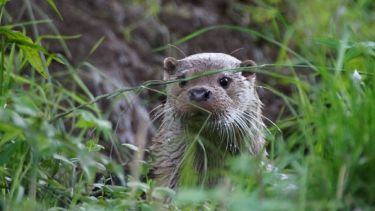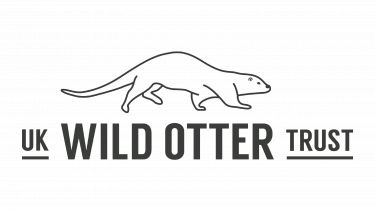A DNA-based survey of otters in Sheffield

The Eurasian otter (Lutra lutra) underwent a severe decline in the UK due to pollution caused by chemical pesticides, habitat loss and persecution, becoming locally extinct in much of England.
Bans on pesticides, legal protection provided by the Wildlife and Countryside Act (1981), improvements in water quality and targeted conservation effort have led to the return of the otter to many counties, including Yorkshire and Derbyshire. Otter recovery has been slow, especially in the North of England.
Otter numbers have been estimated on their dropping (spraint) abundance which suggested a current very rough estimate of 1600 otters in England (Source: Peoples Trust for Endangered Species). However several studies have found there is no correlation between the number of spraint in an area and the number of otters.
Little is known about the UKs recovering population of otters and further research is needed. As far as we are aware ours is the first DNA-based survey of otter numbers in the North of England.
Further details about this project can be obtained from the media items listed below:
- BBC Radio 4 - Today Program, Nature Notes, 7th December 2017 (listen here)
- BBC Radio Sheffield - Kat Cowan Saturday morning show, 23rd September 2017 (listen here)
- BBC Radio Sheffield - Steve Bailey morning show, 27th December 2017 (listen here)
- i newspaper - Significant otter, 21st November 2017 (in print & online subscription)
- Yorkshire Post - How otters came home to the Peak District, 14th November 2017 (in print & online)
- BBC News - DNA survey monitors health of Sheffield's urban otters, 23rd September 2017 (online)
- The Star - Amazing photos show otters returning to Sheffield river once dubbed Europe's most polluted, 21st November 2017 (online)
- The Star - Otters in the Don, 25th September 2017 (in print, front page)
AIMS
i) identify the number and sexes of otters on the River Don surrounding Sheffield.
ii) investigate the localities and distribution of otters in Sheffield.
The data obtained has been used to provide information to those responsible for river and riverside planning applications and conservation management strategies. It will also allow us to document future changes in the number of otters along the River Don.
METHODS
a) The banks of the River Don from Deepcar to Rotherham (24 km), including Sheffield city centre, were searched and over 100 spraint (faecal) samples collected. The majority of samples were collected during Summer 2016 and Spring 2017.
b) Genomic DNA was extracted from the faecal samples using commercial kits.
c) The DNA obtained from the sample was PCR amplified with an otter-specific genetic marker in order to identify if it was produced by an otter or not. (The invasive American mink, Neovison vison is present on the River Don and published DNA studies have revealed mink scat being mistaken as otter spraint.)
d) A genetic sex marker was used to identify the sex of the otter producing each spraint.
e) We developed a new set of 7 microsatellite markers specifically designed to amplify with low quality otter DNA, as is found in spraints.
f) These new markers were used to genotype the samples (in triplicate) to obtain a DNA profile from each of the otter spraint samples.
g) The microsatellite DNA profiles obtained for each sample were compared to identify how many unique DNA profiles exist (and so how many different otters (of each sex) are present).
DNA extraction, sequencing, microsatellite genotyping, sex-typing and data analyses were performed at the Molecular Ecology Laboratory, in the School of Biosciences at the University of Sheffield.
SUMMARY OF RESULTS SO FAR
- Otters were detected in urban, suburban and rural locations on the River Don (2016-2017).
- Seven otters were detected in the urban-suburban areas of Sheffield, including at least two males (samples collected in 2017).
- A female otter was detected in a more rural location north of Sheffield (sample collected in 2016).
- More male spraint was found than female, which might suggest that either more males are present (during the sampling time) or that male otters spraint more than females. Otters spraint upto 20 times per day (Andrew Crawford pers. comm.).
- Otter and the invasive American mink Neovison vison were both present at two locations on the River Don.
Future work (subject to further funding)
We hope to continue this work to develop and improve methods for studying otter numbers and distribution.
We would like to survey for more spraint samples that would help to obtain a DNA profile for the female otter identified on the outskirts of Sheffield to investigate if any of the other otters found closer to the city may be her grown-up cubs (click here for sounds of otter cubs). We also intend to collect spraints from the waterways surrounding Sheffield to study connectivity.
We hope to repeat this study in the future to investigate how otter numbers have changed and improve techniques further to allow us to reveal territory ranges and any landscape barriers.
We are appealing for funds, sponsors and partners to continue our DNA study of Sheffield's otters, if you can help please visit our fundraising page or contact Dr Deborah Dawson (d.a.dawson@sheffield.ac.uk)
Collaborators
This work on the River Don's otters was done in collaboration with The Sheffield and Rotherham Wildlife Trust and Dr Hannah Dugdale at the University of Leeds.
Acknowledgements
We thank all those who have generously donated to our fundraising page to support this study.
We thank Jason Palmer, Kirsty Lee, Alicia Bailey and the keepers (and the otters) at The Chestnut Centre, Otter, Owl and Wildlife Park and New Forest Wildlife Park for their kind support, sharing knowledge and providing vital control samples for this project.
Professor Stuart Piertney at the University of Aberdeen very kindly provided otter DNA extracted from tissue taken from roadkill otters and these were used to assess the markers. We are also grateful to Dave Webb of the UK Wild Otter Trust for providing training in finding signs of otters and his generous advice and encouragement.
Wildlife Photographer Josh Jaggard and Dave Webb kindly granted permission to use their otter images.
Expert advice was vital to this study. Andrew Crawford of the Environment Agency kindly shared his vast knowledge on the historical otter population crash, surveying top-tips and key insights into otter behaviour.
Chris Firth MBE of the Don Catchment Rivers Trust shared local knowledge of the River Don, its industrial past, barriers to wildlife connectivity and knowledge of local fish and Jack Perks kindly advised on the life history of British freshwater fish and shared knowledge of local otters and wildlife, as filmed for the Derbyshire Wildlife Trust.
The Don Network also offered support by providing grants for the camera traps used in monitoring for the Wildlife Trust's Otterly Amazing project. Last but not least, Christine Gregory kindly shared her wealth of knowledge of water voles, mink and otters and allowed use of her beautiful images of local wildlife to enhance presentations of our work.
Click here to see more details of our many kind collaborators and supporters.
Sample Collection Team
The River Don was surveyed and spraints kindly collected by a team of 34 volunteers including members of the general public, members of the Wildlife Trust, staff and students of The University of Sheffield and members of the Sheffield Canoe Club.
Special thanks to Dr Douglas Ross who collected a large number of the rural samples.
Volunteers were trained by Dave Webb of the UK Wild Otter Trust and Dr Nicky Rivers, Lizzie McBride, Sara Blackburn and Paul Richards of The Sheffield and Rotherham Wildlife Trust, who also collected spraints. Sara and Paul collected the majority of the urban and sub-urban samples.
The Sheffield Otter DNA Team
Principal Investigator: Dr Deborah Dawson (d.a.dawson@sheffield.ac.uk, @ddawson777)
Identifying individual otters via DNA genotyping with microsatellite markers:
- Amy Withers (visiting MSc student from the University of Leeds, 2017)
- (Amy was jointly supervised by Dr Hannah Dugdale, University of Leeds)
- Dr Natalie dos Remedios (Research Technician, University of Sheffield, 2016-2018)
- Gracie Adams (Undergraduate Summer volunteer, University of Sheffield, 2016 & 2017)

